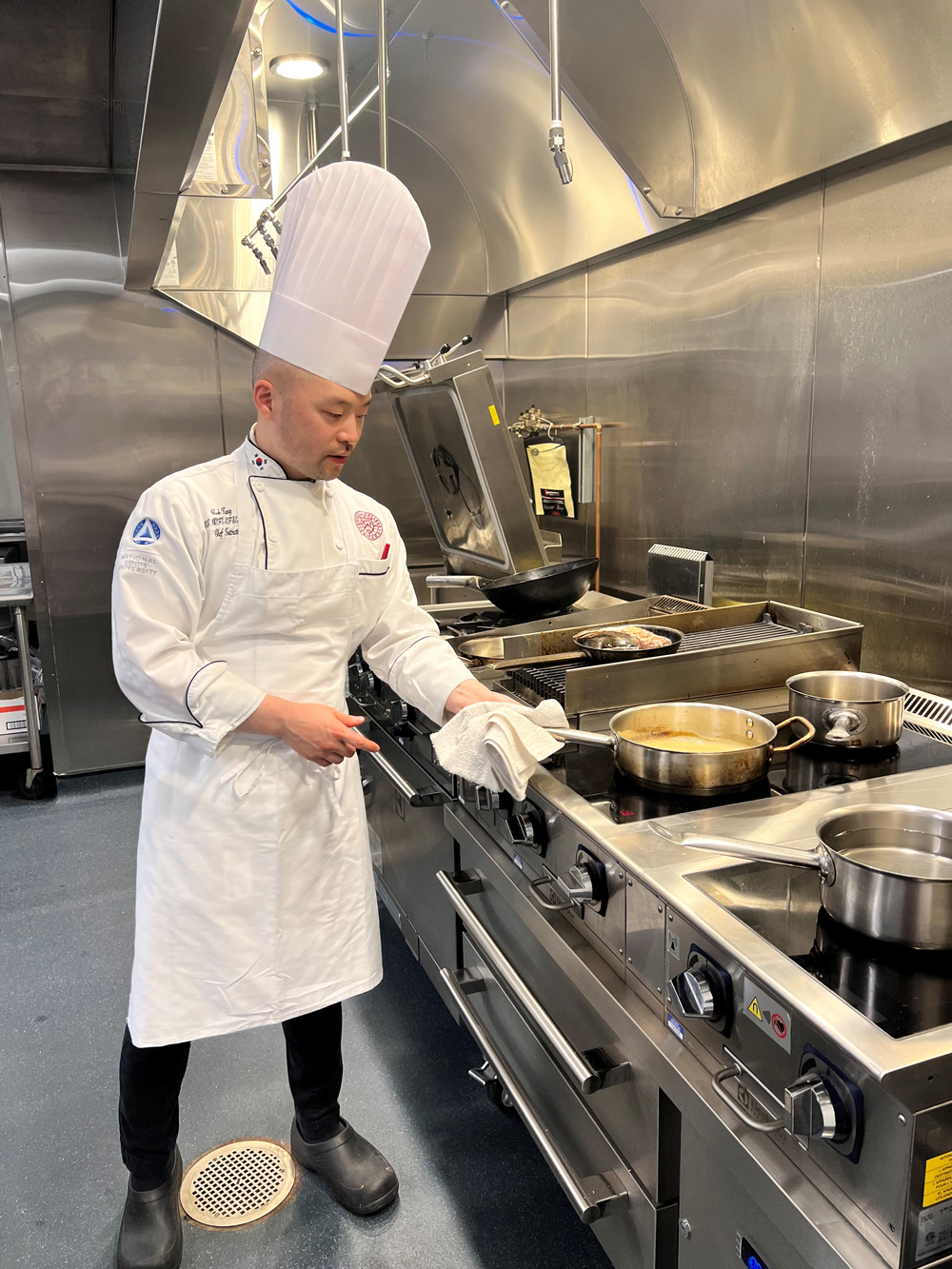
Nothing in Life Stays the Same, So Why Should You?
31 October 2023Adaptation: A call to instructors teaching today’s students.
By Wook Kang, Executive Director of Partnerships/Program Chair at National Louis University/Kendall College
Feedback & comments: This email address is being protected from spambots. You need JavaScript enabled to view it.
“When you are finished changing, you are finished.” – Benjamin Franklin
 Students entering culinary education today come from various backgrounds. Have seasoned instructors adapted to the nuances of these newer generations of students? This article is an introspective review that instructors may need to partake in, to better assess themselves against their students’ needs.
Students entering culinary education today come from various backgrounds. Have seasoned instructors adapted to the nuances of these newer generations of students? This article is an introspective review that instructors may need to partake in, to better assess themselves against their students’ needs.
Effective communication – and teaching – comes down to two-way communication
We know students use technology in creative ways, even to learn about cooking! (Take a look at, “Teaching a Reel Generation.”) However, technology typically utilizes a one-way communication pattern while people learn best from other people using two-way communication.
Some instructors have adopted a one-way approach for all educational topics, even when dealing with students in in-person classes and online. This approach is based on a one-size-fits-all communication style, regardless of the situation. Is this type of teaching outdated? In other words, is this technique relevant in today’s classroom? Great teachers connect to their students using soft skills. They communicate with students individually and do not classify every student as the same. Soft skills can easily be translated into people skills.
A recent article in Forbes Advisor said, “As the nature of work continues to evolve, it is important for individuals to possess attributes and abilities that allow them to collaborate with teams and colleagues—otherwise known as soft skills. From communication and collaboration to adaptability and problem-solving, soft skills are the foundation of effective teamwork and organizational success.”
As technology has transformed the communication landscape, instructors teaching face-to-face have the advantage of interacting with students on a personal level. If you are teaching an on-ground course, take advantage of this opportunity. If teaching online, try to build a personal rapport with each student and create a two-way communication pattern. You will build your soft skills and become a more effective teacher.
As classrooms get larger, instructors should try making the room smaller by getting to know each student. Work with them to understand how they learn and their possible obstacles.
Assess your teaching style
Are you a personable, approachable instructor? If not, what can you change to become that instructor? It’s worth mentioning that instructors should be introspective and evaluate how they: communicate, create, adapt, problem-solve and approach their own work. Perhaps you can start thinking about how you approach these topics.
Also, work ethic and all that goes into work, is an example that illustrates a lot about an instructor and his or her teaching style. Just because someone goes to work, does not mean they have a workman-like attitude. Are you efficient in your work, or do you take a long time to complete one task? Are you good at delegating work to students, or are you unorganized thus creating a disorganized class environment? Again, think about your teaching style in relation to workload.
We know students may have challenges when they enter school. We should have honest conversations with our students to see where their struggles reside and see how it may be a mutually beneficial experience for both parties. It may require you to adapt your teaching style and that means you are not finished teaching yet.
